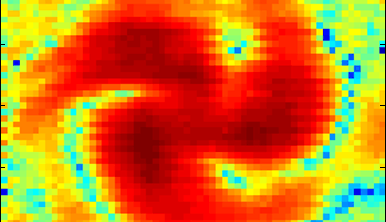Twisted RF beams achieve 32 GB/s
on

A press release from the University of Southern California describes a novel transmission technique which can achieve very high data rates. The research led by Alan Willner of the USC Viterbi School of Engineering does not use a single carrier to send information but instead combines independent radio beams using a ‘spiral phase plate’ that twists each radio beam into a unique and orthogonal DNA-like helical shape. The receiver untwists the beams and recovers the different data streams. "Not only is this a way to transmit multiple spatially collocated radio data streams through a single aperture, it is also one of the fastest data transmission via radio waves that has been demonstrated," Willner said.
The work is based on a technique previously used by Willner to realize high data rates using light beams. According to Willner "The advantage of radio is that it uses wider, more robust beams. Wider beams are better able to cope with obstacles between the transmitter and the receiver, and radio is not as affected by atmospheric turbulence as optics".
Andy Molisch of USC Viterbi said that "This technology could have very important applications in ultra-high-speed links for the wireless 'backhaul' that connects base stations of next-generation cellular systems". Willner is the corresponding author of an article about the research that was published in Nature Communications on Sept. 16. The study's co-lead authors Yan Yan and Guodong Xie are both graduate students at USC Viterbi, and other contributors came from USC, the University of Glasgow, and Tel Aviv University.


Discussion (0 comments)